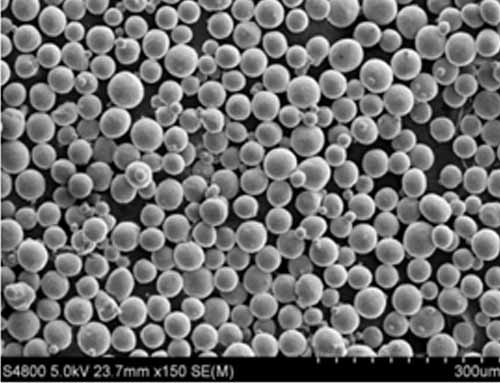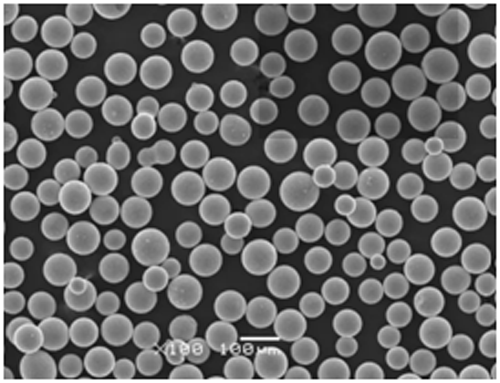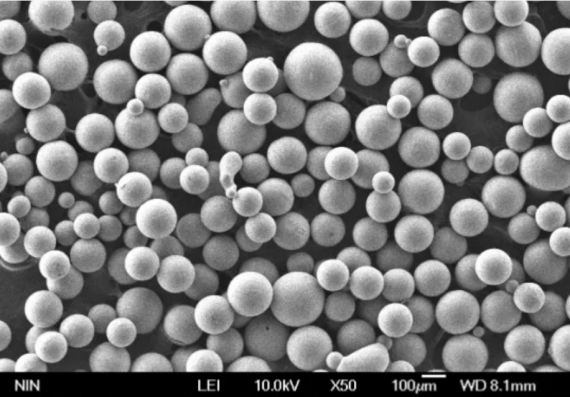Pó de FeCoNiCr, uma liga de alta entropia (HEA), está ganhando destaque na fabricação avançada, ciência dos materiais e aplicações industriais devido às suas propriedades excepcionais. Conhecido por sua versatilidade e desempenho robusto, este pó de liga metálica compreende ferro (Fe), cobalto (Co), níquel (Ni) e cromo (Cr). Seja você um engenheiro, pesquisador ou fabricante, a compreensão do pó de FeCoNiCr pode transformar seus processos e aplicações.
Neste artigo, vamos nos aprofundar na composição, características, aplicações, vantagens e limitações do pó de FeCoNiCr. Também compararemos diferentes modelos e graus, discutiremos as opções de fornecedores e responderemos a algumas perguntas frequentes.

Visão Geral do Pó de FeCoNiCr
O pó de FeCoNiCr pertence à família das ligas de alta entropia, que são sistemas multielementos com proporções quase iguais. Essa composição única resulta em resistência excepcional, resistência à corrosão, estabilidade térmica e resistência à fadiga — qualidades altamente desejáveis em aplicações de engenharia críticas.
Detalhes Principais em um Relance
| Propriedade | Detalhes |
|---|---|
| Elementos | Ferro (Fe), Cobalto (Co), Níquel (Ni), Cromo (Cr) |
| Categoria | Liga de Alta Entropia (HEA) |
| Formulários | Aeroespacial, Automotivo, Biomédico, Ferramentas, Armazenamento de Energia |
| Pontos fortes | Excelentes propriedades mecânicas, estabilidade térmica e resistência à corrosão |
| Métodos de produção | Metalurgia do Pó, Fabricação Aditiva e Pulverização Térmica |
Composição do Pó de FeCoNiCr
A composição do pó de FeCoNiCr envolve proporções quase equimolares de seus metais constituintes. No entanto, variar ligeiramente a composição pode produzir propriedades específicas do material. Aqui está uma análise:
| Composição | Conteúdo Elemental (peso %) | Função |
|---|---|---|
| Ferro (Fe) | 20-25 | Fornece resistência e ductilidade básicas |
| Cobalto (Co) | 20-25 | Aprimora a resistência magnética e ao desgaste |
| Níquel (Ni) | 20-25 | Melhora a resistência à corrosão e a tenacidade |
| Cromo (Cr) | 20-25 | Adiciona resistência à oxidação e dureza |
Características de Pó de FeCoNiCr
O que torna o pó de FeCoNiCr tão único? Aqui está uma análise detalhada de suas características:
| Característica | Descrição |
|---|---|
| Estabilidade térmica | Mantém as propriedades mecânicas em altas temperaturas, ideal para aplicações aeroespaciais. |
| Resistência à corrosão | Resistência superior contra oxidação, tornando-o adequado para ambientes agressivos. |
| Alta Dureza | Excelente resistência ao desgaste, estendendo a vida útil de ferramentas e componentes. |
| Propriedades magnéticas | Fortes características magnéticas, particularmente em aplicações com teor de cobalto e ferro. |
| Personalização | As proporções elementares podem ser ajustadas para aplicações específicas. |






Vantagens do Pó de FeCoNiCr
Por que escolher o pó de FeCoNiCr em vez de outras ligas? Aqui está o que o diferencia:
- Durabilidade excepcional: O FeCoNiCr supera muitas ligas tradicionais em ambientes de alta tensão.
- Versatilidade nas aplicações: De aeroespacial a biomédico, ele se adapta a diversos campos.
- Produção econômica: A metalurgia do pó reduz o desperdício, otimizando o uso de materiais.
- Ecológico: Vidas úteis mais longas dos componentes se traduzem em menor consumo de material e energia.
Modelos e Graus de Pó de FeCoNiCr
Vários modelos de pó de FeCoNiCr atendem a diferentes indústrias e aplicações. Abaixo estão dez modelos notáveis:
| Modelo | Descrição |
|---|---|
| FeCoNiCr-Al | Estabilidade térmica aprimorada para aplicações em altas temperaturas. |
| FeCoNiCr-Mn | Resistência à corrosão aprimorada para ambientes marinhos. |
| FeCoNiCr-Ti | Adição de titânio para maior resistência e aplicações leves. |
| FeCoNiCr-WC | Adição de carboneto de tungstênio para extrema resistência ao desgaste em ferramentas. |
| FeCoNiCr-BN | Nitreto de boro aprimorado para lubrificação e resistência ao desgaste. |
| FeCoNiCr-Cu | Inclusão de cobre para melhor condutividade elétrica. |
| FeCoNiCr-Nb | Adição de nióbio para endurecimento por precipitação em componentes aeroespaciais. |
| FeCoNiCr-Zr | Conteúdo de zircônio para resistência superior à oxidação. |
| FeCoNiCr-Si | Adição de silício para melhor usinabilidade e resistência à oxidação. |
| FeCoNiCr-Ce | Elementos de terras raras para propriedades magnéticas e térmicas aprimoradas. |
Aplicativos de Pó de FeCoNiCr
O pó de FeCoNiCr encontra uso em múltiplas indústrias devido à sua versatilidade e propriedades superiores:
| Setor | Aplicativo | Benefícios Específicos |
|---|---|---|
| Aeroespacial | Componentes de motores a jato, lâminas de turbina | Alta estabilidade térmica e resistência à fadiga. |
| Automotivo | Peças de motor, sistemas de escape | Resistência à corrosão e desempenho em altas temperaturas. |
| Biomédico | Implantes, próteses | Biocompatibilidade e resistência ao desgaste. |
| Ferramentas | Ferramentas de corte, moldes | Dureza extrema e resistência ao desgaste. |
| Energia | Eletrodos de bateria, células de combustível | Alta condutividade elétrica e estabilidade. |
Especificações, tamanhos e classes
| Parâmetro | Detalhes |
|---|---|
| Faixa de tamanho de partícula | 10–150 µm |
| Níveis de pureza | >99% |
| Padrões atendidos | ASTM F75, ISO 5832-1 |
| Opções de embalagem | 1 kg, 5 kg, 25 kg |
| Notas disponíveis | Composição Padrão, Ultra-Pura, Personalizada |
Detalhes de fornecedores e preços
| Fornecedor | Região | Preços (Aprox.) | Recursos especiais |
|---|---|---|---|
| Tecnologia Carpenter | EUA | $100–$120/kg | Oferece formulações de ligas personalizadas. |
| Höganäs AB | Suécia | $90–$110/kg | Líder em materiais de metalurgia do pó. |
| Materiais Sandvik | Global | $95–$125/kg | Cadeia de fornecimento confiável e de alta pureza. |
| AMETEK Specialty | EUA | $105–$130/kg | Foco em ligas de grau aeroespacial. |
| Metais VDM | Alemanha | $110–$140/kg | Conhecido por padrões de pó de alta qualidade. |

Prós e contras de Pó de FeCoNiCr
| Aspecto | Prós | Contras |
|---|---|---|
| Desempenho | Excepcional resistência térmica e à corrosão | Custo mais alto em comparação com as ligas convencionais. |
| Personalização | Composição elementar adaptada às necessidades | Requer técnicas avançadas de fabricação. |
| Durabilidade | Longa vida útil em condições adversas | Base de conhecimento limitada em comparação com ligas tradicionais. |
perguntas frequentes
| Pergunta | Resposta |
|---|---|
| Para que serve o pó de FeCoNiCr? | Componentes aeroespaciais, implantes biomédicos, ferramentas e armazenamento de energia. |
| Como é feito o pó de FeCoNiCr? | Através de metalurgia do pó avançada, fabricação aditiva ou pulverização térmica. |
| A composição pode ser personalizada? | Sim, a proporção elementar pode ser ajustada para otimizar propriedades específicas. |
| Quais são os principais benefícios do pó de FeCoNiCr? | Alta resistência, resistência à corrosão e excelente estabilidade térmica. |
| O pó de FeCoNiCr é ecologicamente correto? | Sim, oferece maior vida útil dos componentes e reduz o desperdício de material. |
| Quais indústrias dependem do pó de FeCoNiCr? | Setores aeroespacial, automotivo, biomédico, de ferramentas e de energia. |
| Existem alternativas ao pó de FeCoNiCr? | Sim, outras ligas de alta entropia ou superligas tradicionais como Inconel ou Hastelloy. |
| Como o FeCoNiCr se compara ao Inconel? | O FeCoNiCr oferece melhor personalização e resistência térmica e à corrosão comparáveis. |
| Qual é o custo médio do pó de FeCoNiCr? | Entre $90 e $140 por quilograma, dependendo da pureza e do fornecedor. |
| Que desafios existem no uso do pó de FeCoNiCr? | Custos de produção mais altos e dados históricos limitados em comparação com ligas tradicionais. |

